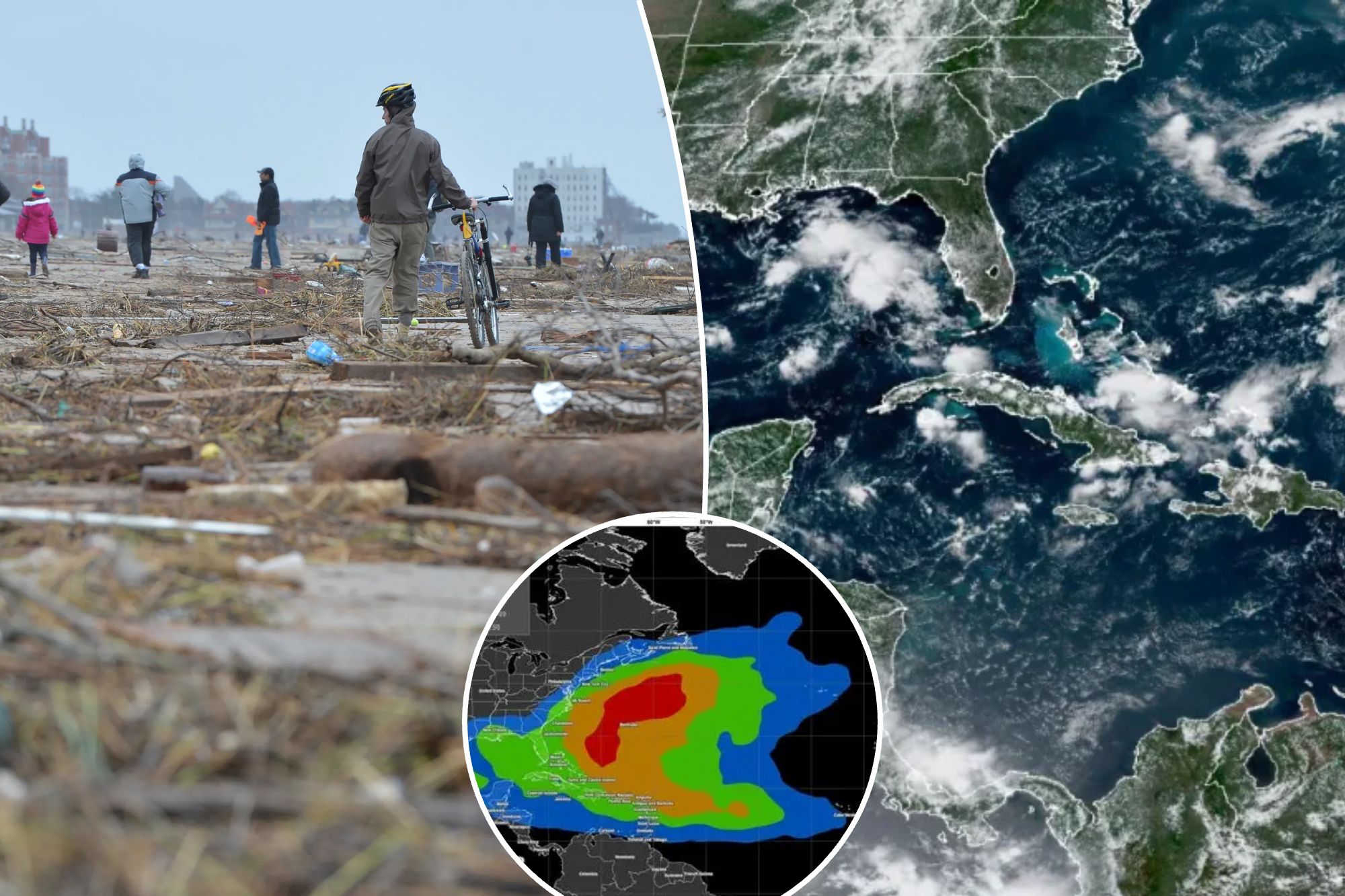
The National Oceanic and Atmospheric Administration predicts an “extraordinary” hurricane season this year, with between 17 to 25 named tropical storms and eight to 13 hurricanes — the most of any pre-season forecast.
Between four and seven tropical storms are expected to become major hurricanes, which have winds exceeding 111 mph.
“This season is looking to be an extraordinary one,” said Richard Spinrad, NOAA administrator.
Hurricane season in the Atlantic spans from June to November, although most activity occurs between August and October.
Previous years have seen on average 14 named storms, seven hurricanes, and just three major hurricanes.
The perilous predictions are due to various factors including near-record warm temperatures in the Atlantic Ocean, which provide energy that helps further fuel storm development, according to NOAA.
Expected La Niña conditions in the late summer also will help with hurricane development, NOAA climate scientists said.
The climate pattern leads to reduced vertical wind shear, or difference in wind speed with height, making it easier for hurricanes to form.
The heightened potential for severe storms has New Yorkers on edge.
They recall how Hurricane Sandy killed at least 44 people in the city and wrought $19 billion in economic damage.
Others are scarred from the recent devastation of Hurricane Ida in 2021, which hit the Big Apple as a post-tropical cyclone and engulfed parts of Queens with flash floods, killing 13.
“We’re constantly living in fear,” said Amrita Bhagwandin, 54, whose Hollis, Queens, home suffered $200,000 in damages during Ida, while two of her neighbors were killed in the flooding. “I am depending on the city to make some intelligent decisions about what happens to us here.”
An April report by Colorado State University found the continental United States coastline had a 62% chance of a major hurricane making landfall this year, up from the historical average prediction of 43%.
Aries Dela Cruz, a spokesman for the city’s Office of Emergency Management, said the agency has been educating residents about their risk and evacuation procedures, and had implemented messaging and a notification service for basement residents, who are especially at risk for flooding.
He added OEM recently tested “tiger dams” that can be used to protect against flooding during extreme weather.
“New York City Emergency Management is dedicated to year-round hurricane preparedness and takes all forecasts seriously,” Dela Cruz said.














